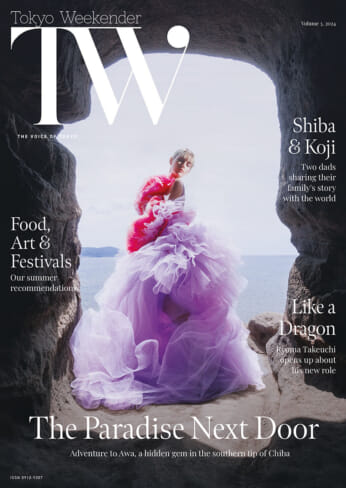by Elyse M. Rogers
OSTEOPOROSIS
It sometimes happens that even though a disease or medical condition has been around for a long time, suddenly it gets a lot of press or publicity. This can be true because a famous person gets that disease, such as when President Reagan had skin cancer, or because more is found out about a particular condition.
Such is the case with a very “in” condition today — osteoporosis.
Osteoporosis is a condition where the bones lose so much density or the skeleton weakens so much that the slightest injury can cause a fracture. This condition can happen in younger people in some circumstances, but in general it is a problem for women after menopause. Since menopause traditionally occurs at about 50-55 years of age, it is the women 55 and older who usually develop osteoporosis, and not all women do.
Osteoporosis strikes about 25 percent of older women. It strikes men too, but not with the frequency it docs with women. (Wouldn’t you know that men would be the lucky ducks; they have more bone mass than women to begin with, and lose it more gradually as they age.) Still, osteoporosis is a significant problem, since this painful, disfiguring and often disabling condition affects about 15-20 million men and women in the United States alone.
Since I’ve had lots of questions from readers about this condition, I decided to attend a symposium put on in the States entitled “Osteoporosis: What You Need to Know.” Michael Miller. M.D., a fine specialist in Endocrinology and Internal Medicine, gave the key lecture and since he is a good friend and very knowledgeable about this subject I was particularly interested in hearing what he had to say to the packed lay audience (of mostly women).
WHY AND HOW DOES OSTEOPOROSIS OCCUR?
Most of us tend to think of bones as solid and unchanging, but that’s not true. Bones are actually complex, living tissues that are constantly changing. That’s fortunate because bones can heal after a break, and they can be aided in development and health by diet and exercise. (They can also be harmed by an improper diet, lack of exercise and some other conditions — but more about that later.)
Until age 30-35, bones build and store bone efficiently; by that age we all have our maximum bone mass. Three main factors influence just how optimum our bone mass will be: 1) heredity, 2) exercise and nutritional status and 3) hormonal status. From that “maximum-bone-mass” age until we die, our body, as part of the natural aging process, breaks down bone faster than new bone can be formed.
Women lose bone rapidly from about the time of menopause, then at a gradually declining rate over the next 10 years; thereafter, even if you’re a woman who lives to be 100, you lose bone at a much lower rate, but you still continue to lose it until you die. To keep this in perspective for the men, the rate of bone loss is equal for men and women from ten years beyond a woman’s menopause.
One of the problems with osteoporosis is that it’s a “silent” condition. There are no real signs or symptoms until the disease is well advanced. For example a hip or wrist fracture may be the first sign of the disease, or an actual loss of physical height (because the bones of the spine weaken and crush together). Sometimes when the skeletal vertebrae fracture and collapse, they produce a curving of the spine often called the “dowager’s hump.”
WHO GETS OSTEOPOROSIS?
Although age and sex are probably the primary factors, as I mentioned, there are some other factors as well. It’s interesting to note that white and Oriental women are most likely to develop osteoporosis. In addition, it appears that small-boned and thin women are at greater risk. (This is probably the first good news the more robust woman has received in years!)
In addition to menopause occurring at the normal time of life, early menopause, either natural or artificial, can increase the risk of osteoporosis. Why some women experience natural menopause as early as their late 30s is not known: artificial menopause is created by the surgical removal of the ovaries (due to cancer or disease). In addition, certain conditions such as anorexia (self starvation), bulimia (frequent self-inflicted vomiting or purging), or excessive physical exercise can play a role in speeding up the loss of bone tissue.
I’m sure you’ll not be surprised to learn that our lifestyle can affect our likelihood of developing osteoporosis. Smoking and drinking too much alcohol is suspect as is poor diet, (particularly not getting enough calcium) and lack of exercise.
Medications and diseases can predispose us to osteoporosis in some cases also. For example, endocrine disorders and rheumatoid arthritis can make us more susceptible to osteoporosis. Medications such as cortisone-like drugs also seem to contribute to an increased risk of osteoporosis.
PREVENTION OF OSTEOPOROSIS
Prevention is the key to this disease. Dr. Miller compared the problem of osteoporosis to that of hypertension (high blood pressure). “Each condition is present a long time before severe complications occur such as heart attack, stroke or bone fracture. Prevention of these complications makes much more sense than treating the end stage with more severe complications,” is the way the good doctor put it.
So, if we women (who are most at risk) want to prevent osteoporosis, what should we do? Well, there arc several points to consider in a prevention program: 1) adequate calcium intake, 2) exercise, 3) estrogen replacement therapy (ERT) after menopause and 4) other dietary factors.
Let’s look at each of these preventive measures in detail:
1) Adequate Calcium Intake. Getting enough calcium in the diet starts early—in childhood. Adequate calcium intake is very important during those growing and developing years so that at age 30-35 our “optimum” bone mass is pretty good. Women who are pregnant or breast feeding need to be extra careful to get adequate calcium in their diet since they are supplying calcium to the fetus or baby as well as to their own bones and teeth.
An interesting fact is that 99 percent of the body’s calcium is stored in the bones and teeth; the other one percent is in the blood where that minute amount is involved in making the heart beat, contracting and relaxing muscles, clotting blood and transiting messages from nerves.
Since the calcium in the blood is essential for the body to function and since the body can’t make calcium, if we don’t cat enough calcium-rich foods, the body will take the calcium from the bones and supply the necessary blood level. Obviously borrowing calcium from the bones for a day or two is not going to make a lot of difference, but if the process goes on week after week, and year after year…
Unfortunately, many females do not get enough dietary calcium—at any age and in any culture! I heard a Tokyo doctor and nutritionist complaining that the young women of Japan are seriously lacking in Vitamin C and calcium in their diet because they drink soda pop instead of green tea (a high source of vitamin C) and they eat snack foods rather than tofu (a high source of calcium). Teen-age girls and women of all ages are often dieting, too, so they don’t want the calories many calcium rich foods contain.
The current recommended requirements for dietary calcium are 1,000 milligrams (mg) per day before menopause and 1,500 mg. per day after. (Pregnant and nursing women need 1,200-1,600 mg. per day.)
Milk is about the easiest, rich source of calcium, supplying about 300 mg. per 8 oz. (approx. 250 ml.) glass. Remember, skim milk has all the calcium of whole milk, but about half the calorics. Other good sources (all in mgs.): Tofu (a piece about 2 1/2 in. square by 1 inch thick) 108, beans (1 cup dried, cooked) 90, cheese (1 oz.) 150-250. Fish, particularly fish with bones is a good source too: salmon (3 oz. with bones) 167, and sardines (3 oz. with bones) (Note, 1 ounce equals approximately 28 grams of weight.)
Most all dairy products are rich in calcium, including ice cream, yogurt, milk shakes, etc, as are all foods made with milk, of course, including puddings, creamed soups, etc.
Since many women, particularly older women, are not about to drink five glasses of milk per day (or eat the equivalent in calcium-rich foods), calcium supplements are popular. Most doctors approve and order these supplements now, suggesting the woman herself decide which form to use.
One popular calcium pill is Tums, which is easy to take and relatively inexpensive. (Each Turns contains about 200 mg. of usable calcium.) Another popular one is oyster calcium tablets (available in Tokyo stores). Potencies range from 200-500 mg. per tablet.
Be sure that any supplement you buy tells you the usable calcium in the tablet since calcium is combined with other compounds (it’s calcium carbonate in the above two tablets). So, a tablet that contains 500 mgs. of calcium carbonate only delivers 200 mg. of calcium.
Although it is possible to get enough calcium from pills alone, try to some calcium glass or two or a serving some cheese, makes good sense.
It’s been found that you get much more from a supplement by taking it several times during the day rather than all at once—the absorption rate is far better. One word of caution: anyone who has a tendency toward kidney stone formation should not be on supplemental calcium without permission from her/his doctor.
2. Exercise. Regular, weight bearing exercise has been demonstrated to strengthen bones by increasing their density. Weight bearing exercises are ones which place moderate stress on the spine and long bones of the body, such as walking, jogging, dancing and even standing. Other specific exercises to moderately stress other bones are also helpful. Tennis players, for example, tend to have very dense bones in their arms.
3. Estrogen Replacement Therapy (ERT). The rapid decrease in bone density in women after menopause results from the decrease in the hormone estrogen. Replacing that hormone has proven to significantly slow down the bone loss and help women from developing osteoporosis.
Unfortunately ERT got kind of a bad name when its use was first started because there was an increased rate of uterine cancer in those women on ERT therapy. However, in that initial program only estrogen was given; now a combination of both estrogen and progesterone are prescribed together. With this new combined therapy, there appears to be no increase in cancer incidence in women; in fact there may actually be a decrease.
Since ERT must be prescribed by a doctor, I think every woman at or near menopausal age should talk to her gynecologist about ERT and get the facts about this important new treatment. She can then decide what she wishes to do on a personal basis. Certainly a woman who has other risk factors (such as a mother or grandmother who has had osteoporosis) should think seriously about ERT therapy after the menopause.
4. Other dietary and lifestyle factors. Although calcium is the most important dietary factor, there are others to consider in prevention of osteoporosis. Adequate Vitamin D intake is important since calcium needs Vitamin D to be properly processed by the body. Too much protein can actually inhibit calcium absorption.
In addition, it’s believed that a high intake of caffeine (more than the equivalent of four cups of coffee per day), and too much fiber in the diet, can interfere with calcium absorption too. In general, a good, well-balanced diet is the best diet of all for osteoporosis prevention as well as for general good health.
Smoking cigarettes and drinking too much alcohol arc two life-style factors that can also increase the risk of osteoporosis. Smoking for all health reasons continues to be a no-no; moderate alcohol consumption makes equally good sense.
TREATMENT OF OSTEOPOROSIS
With good prevention, started early in life, most osteoporosis will hopefully be prevented. When and if the disease does occur, however, there are more and more options available. Fortunately orthopedic surgery has come a long way in recent years in hip replacement and other bone/joint replacement techniques.
Other experimental treatments are being investigated, and one that shows promise is sodium fluoride treatments. In addition, women with established osteoporosis who cannot take estrogen may be able to use another hormone, calcitonin, that has been shown to reduce bone loss.
New diagnostic techniques are also proving to be very helpful in providing a more definitive diagnosis of osteoporosis before fractures occur. For example, the new dual photon beam bone desitometer or absorptiometer (DPA) can more accurately measure loss of bone density.
Osteoporosis is one of those diseases of the aging that can severely affect the quality of life of the stricken individual. So, it behooves every woman to do whatever she can to prevent herself from becoming a victim of this condition.








